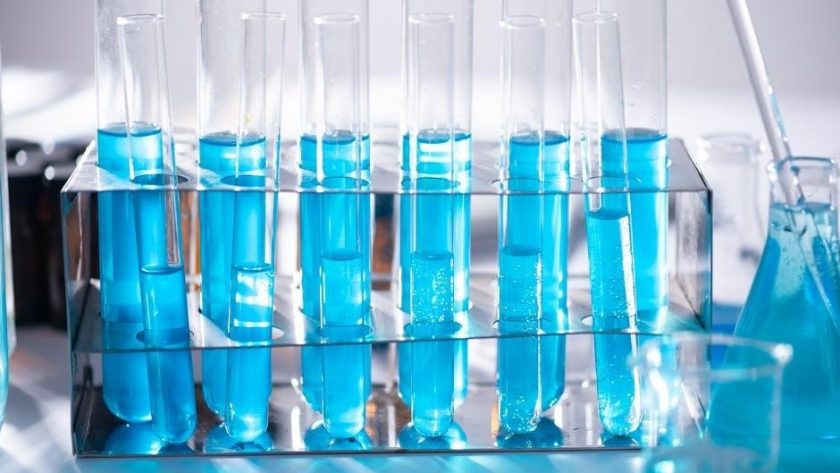Antimicrobial chemistry explores the study and development of agents that inhibit or eliminate pathogens‚ crucial for combating infections and addressing resistance challenges in medicine and preservation.
Definition and Scope of Antimicrobial Chemistry
Antimicrobial chemistry focuses on the study of chemical agents that inhibit or destroy microorganisms‚ including bacteria‚ viruses‚ and fungi. It encompasses the discovery‚ synthesis‚ and characterization of natural‚ synthetic‚ and protein-based compounds with antimicrobial properties. The scope extends to understanding mechanisms of action‚ resistance‚ and applications in medicine‚ agriculture‚ and industry. This interdisciplinary field integrates microbiology‚ biochemistry‚ and pharmacology to develop effective solutions for combating infections and preserving health.
Importance of Antimicrobial Agents in Modern Medicine
Antimicrobial agents are vital in modern medicine for treating infections‚ preventing sepsis‚ and saving lives. They are essential for surgical procedures‚ cancer chemotherapy‚ and managing immune deficiencies. The rise of antibiotic resistance underscores their critical role in maintaining public health. Effective antimicrobials enable the treatment of bacterial‚ viral‚ and fungal infections‚ ensuring the continued success of modern medical interventions and safeguarding global health security.
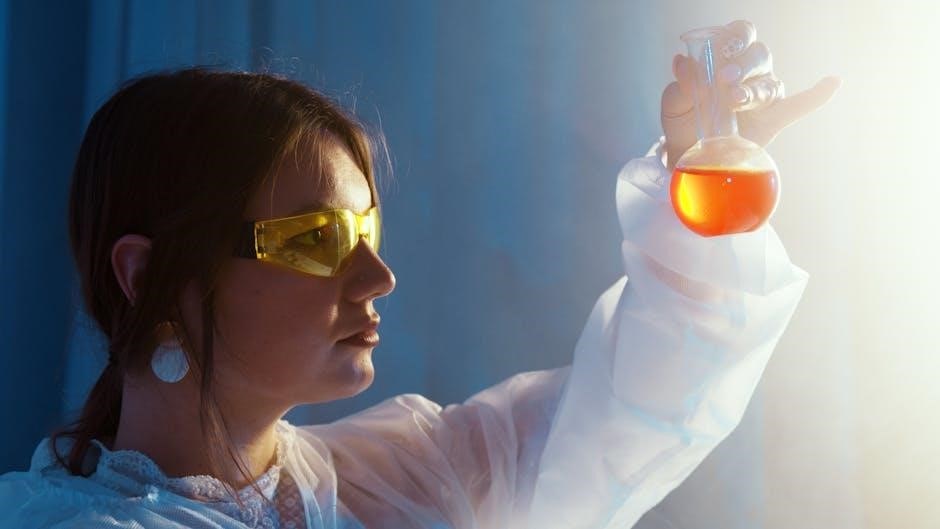
Overview of Antimicrobial Resistance and Its Challenges
Antimicrobial resistance poses a significant threat to global health‚ driven by misuse of antibiotics and natural selection. Pathogens develop resistance through genetic mutations‚ biofilm formation‚ and horizontal gene transfer. This challenge complicates treatment of infections‚ increases healthcare costs‚ and raises mortality risks. Emerging resistance mechanisms‚ such as enzyme-mediated inactivation and efflux pumps‚ further exacerbate the problem. Addressing this issue requires novel therapeutic strategies‚ improved diagnostics‚ and stringent antimicrobial stewardship to curb the spread of resistant pathogens and ensure effective infection control.

Protein-Based Antimicrobials
Protein-based antimicrobials‚ such as S100 proteins‚ exhibit potent bactericidal properties‚ with redox states influencing their zinc-sequestration capacity‚ offering novel strategies to combat microbial infections effectively.
S100 Proteins: Structure‚ Function‚ and Antimicrobial Properties
S100 proteins are a family of small‚ calcium-binding proteins characterized by their EF-hand calcium-binding motif. They play roles in inflammation‚ immune response‚ and antimicrobial defense. Their structure allows interaction with various targets‚ modulating cellular processes. S100 proteins exhibit antimicrobial properties through zinc sequestration and redox chemistry. For instance‚ S100A7 demonstrates redox-dependent Zn(II)-binding capacity‚ influenced by calcium ions indirectly. These proteins are critical in innate immunity‚ offering insights into developing novel antimicrobial therapies.
Redox State and Zinc-Sequestration Capacity in S100A7
The redox state of S100A7 significantly influences its zinc-sequestration capacity‚ a critical factor in its antimicrobial function. Intramolecular disulfide-bond redox chemistry modulates this ability‚ allowing the protein to adapt to physiological conditions. Unlike other S100 proteins‚ S100A7’s antimicrobial properties are not directly regulated by Ca(II) ions‚ though calcium indirectly affects its Zn(II)-binding properties. This unique mechanism highlights S100A7’s role in innate immunity and its potential as a target for developing novel antimicrobial therapies.
Bactericidal Properties of S100 Proteins
S100 proteins exhibit potent bactericidal properties‚ primarily through mechanisms involving membrane disruption and ion sequestration. These proteins target bacterial membranes‚ causing structural damage and ultimately leading to cell death. Their ability to bind and sequester essential ions‚ such as zinc‚ further inhibits bacterial growth. Studies on S100A7 and related proteins highlight their role in innate immunity‚ demonstrating their effectiveness against various pathogens. This makes them promising candidates for developing novel antimicrobial therapies to combat resistant infections.
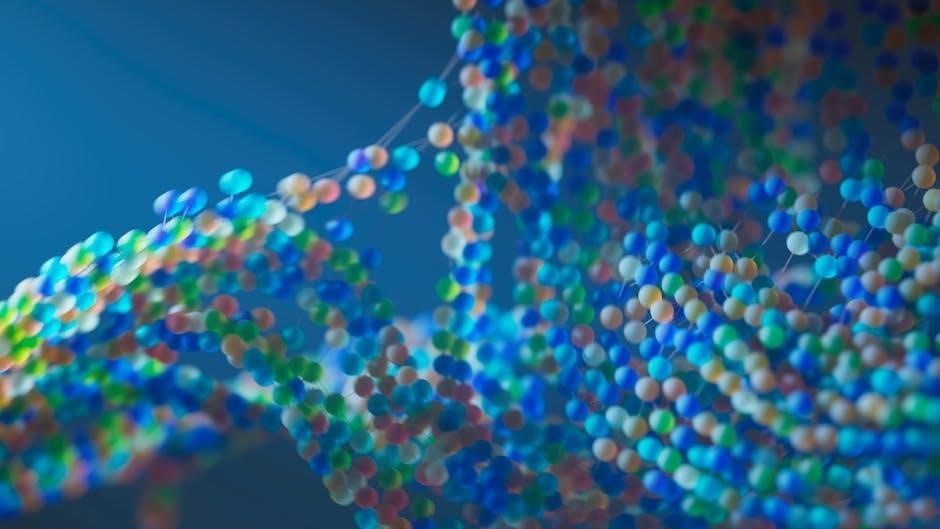
Antimicrobial Peptides (AMPs)
AMPs are naturally occurring peptides with broad antimicrobial activity‚ often derived from plants and amphibians‚ functioning by disrupting bacterial membranes and inducing cell lysis effectively.
Discovery and Characterization of Novel AMPs from Capsicum Species
The discovery of novel AMPs from Capsicum species has unveiled promising antimicrobial agents. CC-AMP1 and CC-AMP2‚ identified in Capsicum chinense x frutescens‚ exhibit robust antibacterial activity. Further exploration revealed similar AMPs in other Capsicum species‚ indicating the existence of two previously undiscovered AMP families. Comparative studies highlighted key residues and structural features that enhance antimicrobial potency‚ providing insights into their mechanisms and potential applications in combating bacterial infections.
Mechanisms of Action: Membrane Disruption and Bacterial Lysis
Antimicrobial peptides (AMPs) primarily act by disrupting bacterial membranes‚ leading to cell lysis. Magainins and temporins‚ derived from amphibians‚ interact with lipid bilayers‚ causing structural instability and eventual membrane breakdown. Similarly‚ CC-AMP1 and CC-AMP2 from Capsicum species exhibit potent antibacterial activity by targeting bacterial membranes. This mechanism ensures rapid bacterial death‚ making AMPs effective against antibiotic-resistant strains. Their ability to directly disrupt membranes highlights their potential as alternatives to traditional antibiotics in combating infections.
Potent Antibacterial Activity of Magainins and Temporins
Magainins and temporins‚ derived from amphibian skin‚ exhibit potent antibacterial activity by disrupting bacterial membranes. These peptides interact with lipid bilayers‚ causing structural instability and leading to bacterial lysis. Their broad-spectrum efficacy against antibiotic-resistant strains highlights their potential as natural antimicrobial agents. Studies demonstrate their ability to target pathogens effectively‚ making them promising candidates for developing novel therapeutic strategies to combat infections and overcome resistance challenges in modern medicine.

Synthetic Antimicrobial Polymers
Synthetic polymers are engineered to inhibit microbial growth‚ offering durable and versatile solutions. Their design focuses on disrupting pathogens while maintaining material integrity‚ enhancing safety and applications.
Designing Antimicrobial Polymer Coatings
Antimicrobial polymer coatings are engineered to inhibit microbial growth on surfaces. These coatings often incorporate biologically active polycations‚ such as poly(trialkylvinylbenzylammonium chloride)‚ which disrupt microbial membranes. Research focuses on synthesizing polymers with high antimicrobial potency while ensuring durability and safety. Advanced designs target specific pathogens‚ reducing the risk of resistance. Such coatings are applied in medical devices‚ food packaging‚ and industrial settings to enhance safety and extend product lifetimes. Their development is critical for combating both pathogenic and spoilage microorganisms effectively.
Biologically Active Polycations and Their Antimicrobial Activity
Biologically active polycations exhibit potent antimicrobial properties by interacting with microbial membranes. These compounds‚ such as poly(trialkylvinylbenzylammonium chloride)‚ disrupt membrane integrity‚ leading to bacterial lysis. Their activity is attributed to electrostatic interactions with negatively charged microbial surfaces. Research highlights their effectiveness against various pathogens‚ including multidrug-resistant strains. Polycations are versatile‚ with applications in coatings‚ medical devices‚ and food safety. Their design and synthesis are tailored to enhance efficacy while minimizing toxicity‚ making them valuable tools in combating microbial infections and contamination.
Cationic Polymer Surfaces: Cellular Targets and Bacterial Responses
Cationic polymer surfaces exhibit antimicrobial activity by targeting bacterial membranes. Their positive charge attracts negatively charged microbial surfaces‚ leading to membrane disruption and bacterial lysis. Studies using Escherichia coli as a model demonstrate that these surfaces induce oxidative stress and activate bacterial stress response pathways. The interaction triggers membrane damage‚ leakage of cellular contents‚ and ultimately bacterial death. Understanding these mechanisms is crucial for designing effective antimicrobial materials‚ offering potential solutions to combat microbial contamination and infection in various applications.
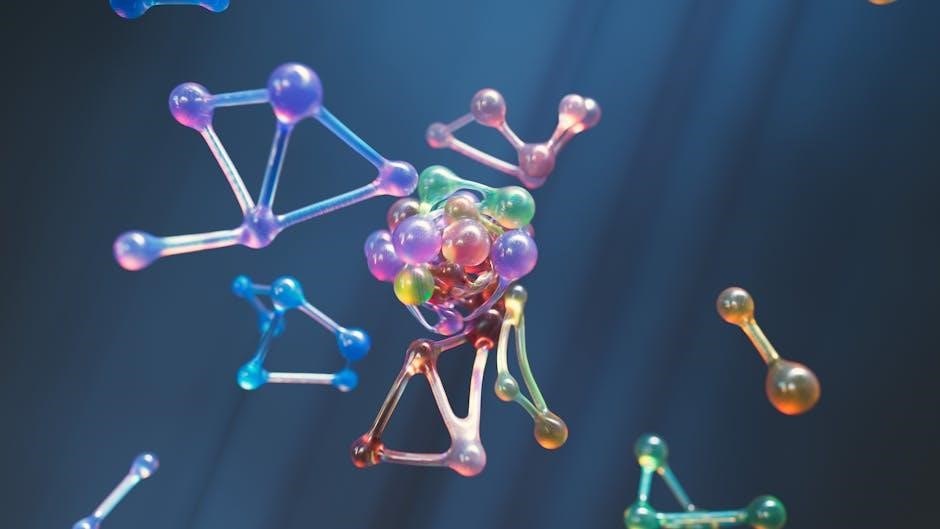
Natural Products with Antimicrobial Properties
Natural products‚ such as plant-derived compounds and marine-derived agents‚ exhibit potent antimicrobial activity. Crude ethanolic plant extracts have shown effectiveness against multidrug-resistant bacteria‚ while marine organisms yield unique antimicrobial compounds.
Plant-Derived Antimicrobial Compounds
Plant-derived compounds‚ such as those from Capsicum species‚ exhibit robust antimicrobial activity. Crude ethanolic extracts of plants have shown effectiveness against multidrug-resistant bacteria‚ including E. coli and Klebsiella pneumoniae. These natural products often function by disrupting bacterial membranes or interfering with essential cellular processes. The discovery of novel AMPs from plant sources highlights their potential as alternatives to traditional antibiotics. Such findings underscore the importance of exploring plant-based antimicrobial agents for combating resistant pathogens and developing sustainable therapeutic solutions.
Antimicrobial Activities of Crude Ethanolic Plant Extracts
Crude ethanolic plant extracts have shown significant antimicrobial activity against multidrug-resistant pathogens‚ including E. coli‚ Klebsiella pneumoniae‚ and Candida albicans. These extracts offer a promising avenue for developing natural antimicrobial solutions. Their effectiveness highlights the potential of plant-derived compounds as alternatives to synthetic agents. Further research into their mechanisms could unlock new strategies for combating infections‚ particularly in the face of rising antimicrobial resistance.
Marine-Derived Antimicrobial Agents
Marine organisms‚ such as sponges‚ corals‚ and algae‚ produce unique secondary metabolites with potent antimicrobial properties. These compounds‚ including alkaloids and peptides‚ inhibit bacterial growth and fungal infections. Marine-derived agents offer promising solutions to combat antibiotic resistance. Research highlights their potential in drug development‚ particularly against multidrug-resistant pathogens. The diversity of marine life provides a rich source for discovering novel antimicrobial molecules‚ emphasizing the importance of marine biodiversity in advancing antimicrobial chemistry.
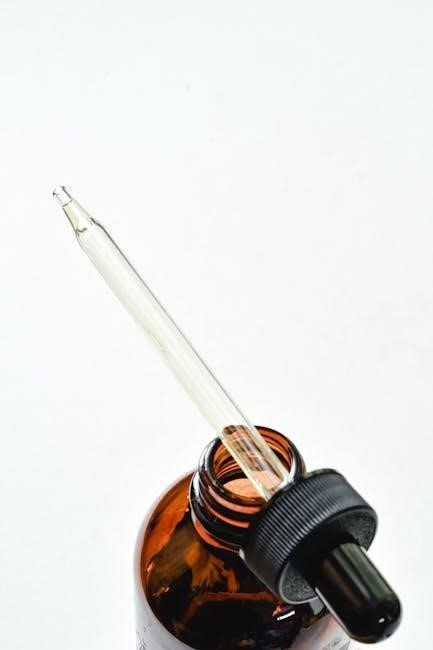
Specific Antimicrobial Compounds
Benzothiazole derivatives‚ Phanquone‚ and defensins exhibit potent antimicrobial properties‚ targeting pathogens through unique mechanisms. These compounds are vital in developing novel therapies to combat resistant infections effectively.
Benzothiazole Derivatives: Synthesis and Antimicrobial Potential
Benzothiazole derivatives are versatile heterocycles with significant pharmacological potential. Their synthesis involves modifying the core structure to enhance antimicrobial activity. These compounds exhibit broad-spectrum efficacy against bacteria‚ fungi‚ and other pathogens. Structural diversity allows for tailored properties‚ making them promising candidates for drug development. Research highlights their ability to inhibit microbial growth through various mechanisms‚ showcasing their potential in combating infections. Their versatility in chemical modification makes them valuable in developing novel antimicrobial agents for medical and agricultural applications.
Phanquone: Mechanism of Action and Bacterial Damage
Phanquone is an antimicrobial agent under investigation for its mechanism of action against bacterial cells. Research focuses on understanding how it causes bacterial damage and death. The compound likely disrupts essential cellular processes‚ leading to bacterial cell death. Elucidating its mode of action is crucial for evaluating its potential as an antimicrobial agent. This knowledge could contribute to developing new strategies to combat bacterial infections‚ particularly against resistant strains. Further studies are needed to fully characterize its effects and optimize its antimicrobial properties.
Defensins: Combination Therapy with Traditional Antibiotics
Defensins‚ naturally occurring antimicrobial peptides‚ are being explored for their potential in combination therapy with traditional antibiotics. This approach aims to enhance the effectiveness of existing antibiotics against antibiotic-resistant bacterial strains. By targeting bacterial membranes and disrupting cellular processes‚ defensins can complement the action of conventional drugs. Research highlights the synergy between defensins and antibiotics‚ offering a promising strategy to combat resistance. This combination may pave the way for innovative treatments for infections caused by multidrug-resistant pathogens‚ addressing a critical global health challenge.

Mechanisms of Antimicrobial Resistance
Bacteria develop resistance through genetic mutations‚ horizontal gene transfer‚ and biofilm formation‚ which shield them from antimicrobial agents‚ complicating treatment and necessitating new strategies.
Understanding Bacterial Resistance to Antimicrobial Agents
Bacterial resistance arises through genetic mutations‚ horizontal gene transfer‚ and adaptive mechanisms like biofilm formation. These processes enable pathogens to evade or neutralize antimicrobial agents‚ complicating treatment. Efflux pumps and enzyme production further enhance resistance‚ making infections harder to control. Understanding these mechanisms is critical for developing targeted therapies and mitigating the spread of resistant strains‚ ensuring effective antimicrobial strategies in healthcare and beyond.
Role of Biofilms in Antimicrobial Resistance
Biofilms‚ structured communities of bacteria encased in a protective matrix‚ significantly enhance antimicrobial resistance. The matrix reduces antimicrobial penetration and traps agents‚ limiting their effectiveness. Biofilms adhere to surfaces‚ sheltering bacteria and promoting persistent infections. This complex structure fosters the survival of resistant strains‚ making biofilm-associated infections challenging to treat and highlighting the need for targeted therapies to disrupt these microbial communities and combat resistance effectively.
Emerging Strategies to Combat Resistance
Emerging strategies to combat antimicrobial resistance include the development of novel compounds like defensins‚ which enhance antibiotic efficacy. Researchers are also exploring nanotechnology for targeted drug delivery‚ improving effectiveness while reducing resistance. Additionally‚ collaborative efforts focus on discovering new antimicrobial agents from natural sources‚ such as plant extracts and marine-derived compounds. These innovative approaches aim to outpace resistance mechanisms and provide sustainable solutions for treating infections in the face of growing antimicrobial challenges.
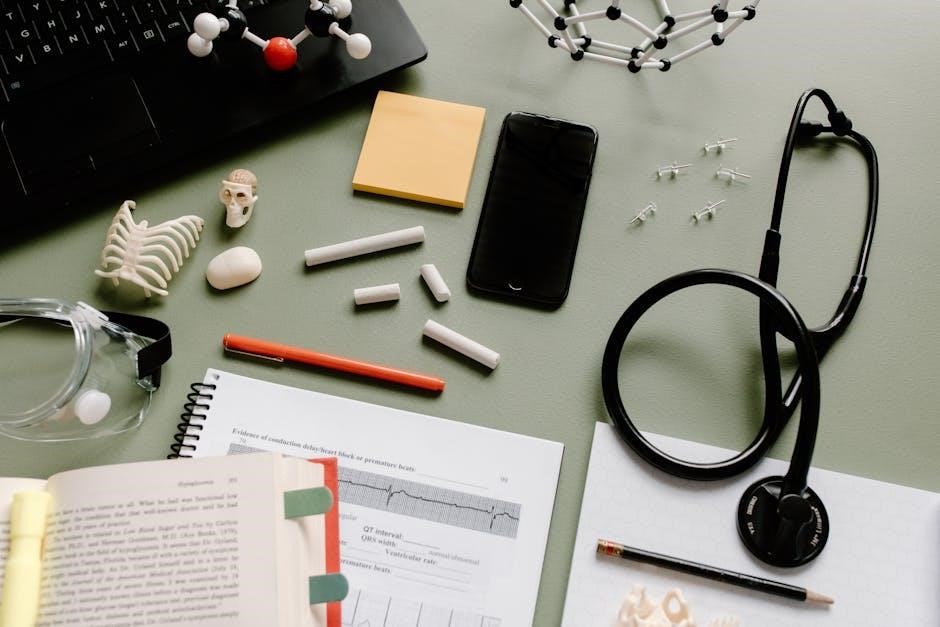
Applications of Antimicrobial Chemistry
Antimicrobial chemistry applies to medicine‚ agriculture‚ and industry‚ ensuring infection treatment‚ food safety‚ and material preservation through innovative coatings and compounds‚ addressing global health challenges effectively.
Medical Applications: Treating Infections and Diseases
Antimicrobial chemistry plays a vital role in medicine by developing agents that treat infections and diseases. S100 proteins‚ like S100A7‚ exhibit bactericidal properties‚ targeting pathogens effectively. Researchers explore defensins in combination with traditional antibiotics to combat resistant strains. AMPs‚ such as magainins and temporins‚ derived from natural sources like frog skin‚ demonstrate potent antibacterial activity by disrupting membranes. These advancements highlight the potential of antimicrobial chemistry in addressing global health challenges and improving infection treatment strategies.
Agricultural Applications: Food Safety and Preservation
Antimicrobial chemistry significantly contributes to food safety by developing natural preservatives and coatings. Plant-derived compounds‚ such as crude ethanolic extracts‚ exhibit potent antimicrobial activity against multidrug-resistant pathogens‚ reducing reliance on synthetic additives. Marine-derived agents and synthetic polymers also offer innovative solutions for extending shelf life and preventing spoilage. These advancements ensure safer food production‚ addressing global concerns about foodborne illnesses and maintaining agricultural productivity.
Industrial Applications: Antimicrobial Coatings and Materials
Antimicrobial coatings and materials play a vital role in industrial settings by preventing pathogen growth on surfaces. Synthetic polymers‚ such as poly(trialkylvinylbenzylammonium chloride)s‚ exhibit strong antimicrobial properties‚ making them ideal for coatings. These materials inhibit microbial colonization‚ reducing contamination risks in industrial environments. Their application extends to medical devices‚ food processing equipment‚ and public spaces‚ ensuring durability and hygiene. Such innovations address the need for sustainable and effective antimicrobial solutions in various industries.

Current Trends and Future Directions
Exploring natural products and their derivatives‚ advancing material science‚ and leveraging interdisciplinary research are key trends driving antimicrobial chemistry’s future‚ offering innovative solutions to global health challenges.
Advances in Antimicrobial Drug Discovery
Recent advancements in antimicrobial drug discovery focus on exploring natural products‚ such as plant-derived compounds and marine-based agents‚ to identify novel antimicrobial candidates. Researchers are also investigating the potential of antimicrobial peptides (AMPs) like magainins and temporins‚ which exhibit potent antibacterial activity by disrupting bacterial membranes. Additionally‚ the study of S100 proteins and their zinc-sequestration properties offers new insights into developing targeted therapies. These efforts‚ combined with interdisciplinary research‚ aim to address the growing challenge of antimicrobial resistance and uncover innovative solutions for future treatments.
Nanotechnology in Antimicrobial Chemistry
Nanotechnology is revolutionizing antimicrobial chemistry by enabling the development of advanced materials with enhanced antimicrobial properties. Researchers are designing polymer coatings and surfaces with cationic properties that disrupt bacterial membranes‚ effectively inhibiting pathogenic growth. Nanoparticles and nanostructured materials are being explored for targeted delivery of antimicrobial agents‚ improving efficacy while reducing toxicity. These innovations hold promise for combating resistance and enhancing safety in medical‚ agricultural‚ and industrial applications‚ offering a cutting-edge approach to microbial control and public health protection.
Collaborative Research and Global Health Initiatives
Collaborative research and global health initiatives are essential for addressing antimicrobial resistance and advancing antimicrobial chemistry. International partnerships enable the sharing of knowledge‚ resources‚ and innovative strategies to combat microbial threats. Researchers worldwide are exploring novel antimicrobial agents‚ such as defensins and AMPs‚ while global health organizations promote standardized protocols for drug discovery and resistance monitoring. These efforts foster a unified approach to developing effective treatments and ensuring equitable access to antimicrobial solutions‚ critical for safeguarding public health and mitigating the global antimicrobial resistance crisis.
